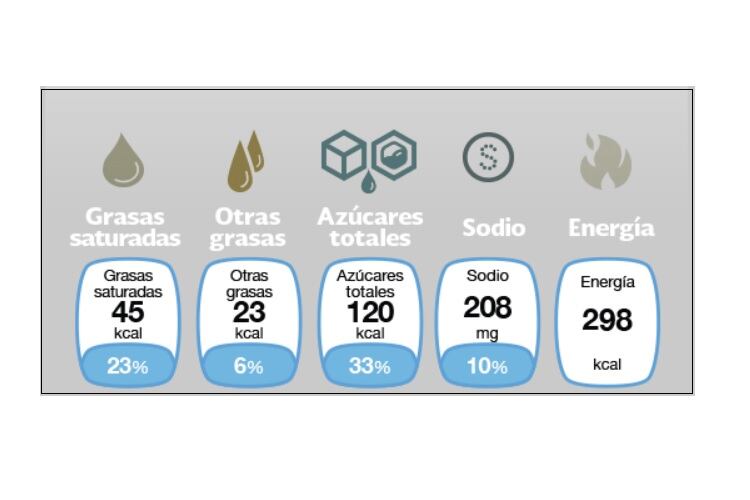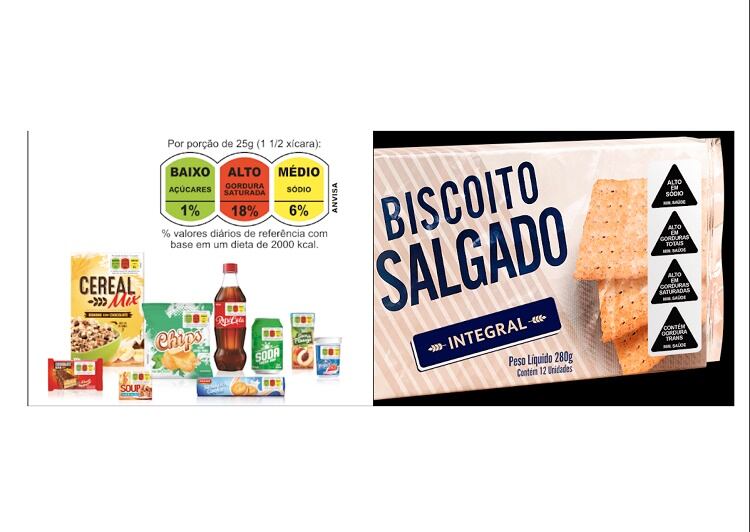In a letter addressed to William Dib and his co-directors of ANVISA, leading researchers on obesity, diabetes and cardiovascular disease state that the triangle model of warning signs (see figure below) has the overwhelming support from both the Brazilian citizens and the public health scientific community. Dib has expressed support of a traffic light labeling model in O Estado de São Paulo and Folha de São Paulo.
The signatories include academic luminaries such as: Barry Popkin, PhD, from the University of North Carolina, Chapel Hill; Frank Chaloupka from the University of Illinois in Chicago; Carlos A. Monteiro, MD, PhD, from the University of São Paulo; Ricardo Uauy, MD, PhD, from the University of Chile; Juan Rivera Dommarco, PhD, from the National Institute of Public Health in Mexico; Walter Willett, MD, DrPH, from Harvard University; Marion Nestle from the University of New York; and Tim Lang, PhD, from City, University of London.
The letter’s authors note that data from a randomized controlled cross over experiment with 1,607 participants comparing the triangle warning label to the traffic light model revealed that, “compared to no label, warning labels influenced consumer perceptions of nutritional quality of a product to a greater extent than the traffic-light labels.
"The warning labels format performed better than the traffic-light model in multiple ways, including: (1) capturing consumer attention; (2) are easier to understand; (3) are more useful at point-of-purchase; (4) reduce the perception of healthiness of the unhealthy products; and (5) reduce the intention to purchase unhealthy products."
The letter added: “Based on research and clear results from research on the Brazilian population, Idec and the Federal University of Paraná (UFPR) presented the Brazilian model of FOP warning labels (the triangle model) to the National Health Surveillance Agency (Anvisa) as the best option to protect the public health. This model has overwhelming support from both the Brazilian citizens and the public health scientific community.
"The triangle model was based on the Chilean warning FOP labels and adapted by experts on information design for the Brazilian context according to international standards on warning communication."

The solution
Prof Popkin and his co-signers go on to cite extensive research supporting the efficacy of front-of-pack labels to improve understanding labels and nutritional information, and influence the purchasing of products.
“[W]e recommend the adoption of a FOP warning label system based on a strong nutrient profiling model as a crucial step towards ensuring consumers to have adequate knowledge to make healthier decisions about purchase and consumption of foods and beverages.
"Obesity, diabetes, and related non-communicable diseases are multi-factorial, complex diseases that will require a package of policy actions. While front-of-package labeling will not solve these health problems on their own, they are a necessary and critical step in the right direction to creating a healthier food supply and providing consumers with the information they need to make healthy choices.
"We support the recommendation from the Pan-American Health Organization that countries in the region adopt the FOP warning label."
Industry preference
On the other side of the debate are many food and beverage industry groups in Brazil, which have voiced support for the traffic light labeling system, citing the universal recognition of the red, yellow, and green system.
In a recent guest article on FoodNavigator-LATAM, ABIMAPI (Brazilian Manufacturers Association of Biscuits, Pasta and Industrialized Breads & Cakes) stated: “During 2018, we have discussed with these partners and the Brazilian Government the better way to give nutritional information on packaging in a simple, clear and objective way to our population.
“The traffic light model advocated by us is already used in countries such as United Kingdom, France and Denmark and is a scientifically based system that contributes more effectively to providing clear information to the population.”
There is also a wider, collective push in the Mercosur region towards traffic light labeling for food and beverage products, spearheaded by CIPAM - the Mercosur Food Industries Coordination – with involvement from food and beverage associations across the region: ABIA from Brazil, COPAL from Argentina, CIALI from Uruguay and CEPALI and CABE from Paraguay.




